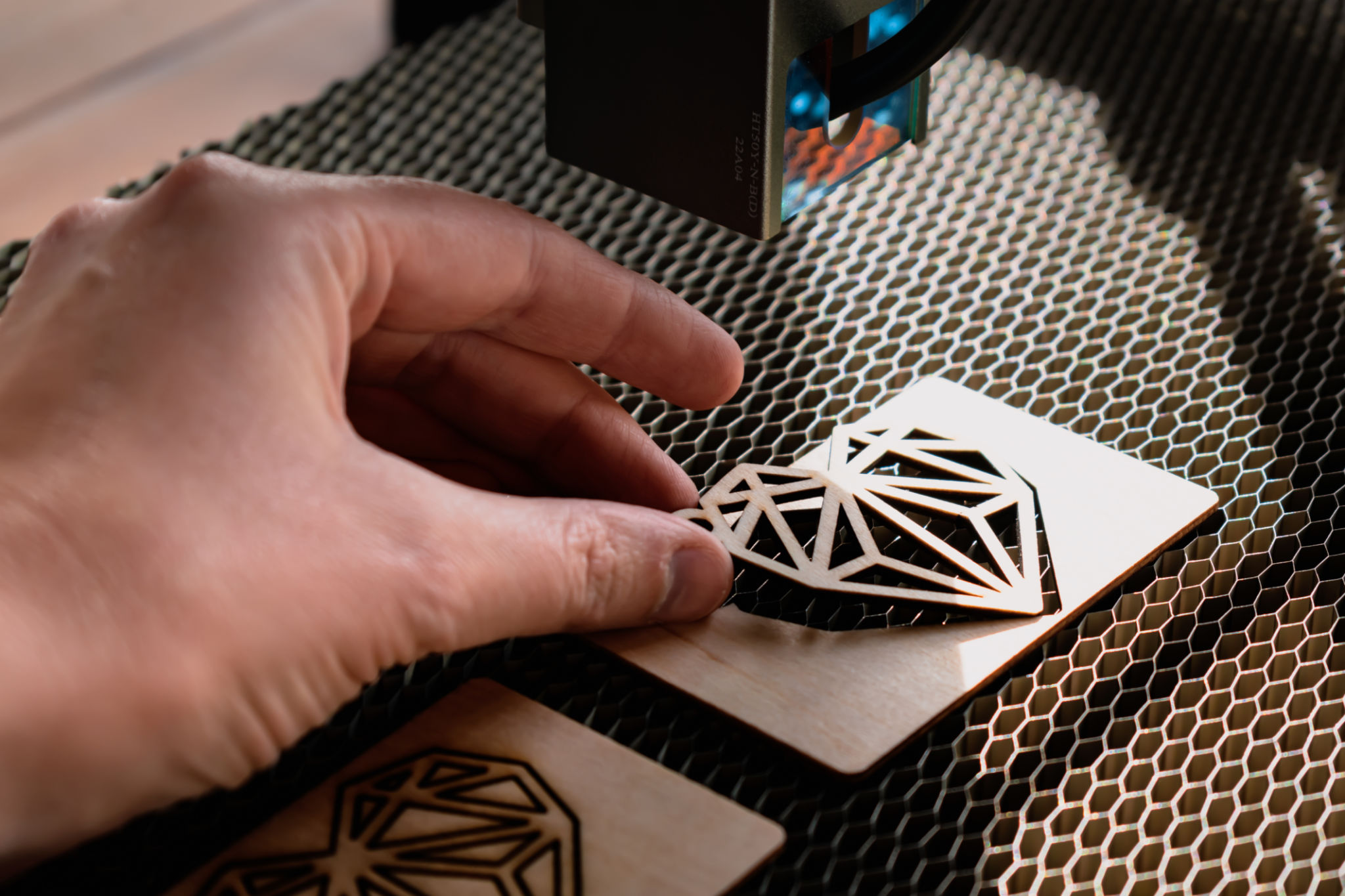Understanding the Science Behind Laser Ablation of Wood and Stone
LL
Exploring Laser Ablation
Laser ablation is a cutting-edge technique used for the precise removal of materials from a solid surface. By focusing a high-powered laser beam, this method effectively vaporizes the material, offering unparalleled precision and control. This process is invaluable in various industries, including art restoration, manufacturing, and even medical applications.
Understanding the science behind laser ablation, especially when applied to wood and stone, requires a deep dive into the interactions between laser light and material surfaces. It’s a sophisticated balance of physics and engineering that allows for the manipulation of surfaces on a microscopic level.

The Physics of Laser-Material Interaction
At its core, laser ablation involves the absorption of laser energy by the target material. This energy is converted into heat, which causes the material to vaporize or sublimate. The efficiency of this process depends on several factors, including the wavelength of the laser, the properties of the material, and the duration of the laser pulse.
Different materials react differently to laser ablation. For instance, wood's organic nature results in a different absorption rate compared to stone's mineral composition. The thermal properties of each material dictate how quickly and effectively they can be ablated.
Factors Affecting Ablation Efficiency
Several key factors influence how efficiently a material can be ablated:
- Wavelength: Different materials absorb different wavelengths of light more effectively.
- Pulse Duration: Shorter pulses often result in cleaner ablation with less heat damage.
- Material Properties: Density and thermal conductivity play significant roles.

Applications in Woodwork
Laser ablation offers numerous benefits when working with wood. It allows for intricate designs and cuts that would be challenging to achieve with traditional tools. This precision opens up new possibilities in furniture design, art, and even musical instrument crafting.
Moreover, laser ablation minimizes waste and ensures a cleaner working environment. The precision of the laser reduces the need for sanding and finishing, preserving the natural beauty and integrity of the wood.
Stone Sculpting with Lasers
The use of laser ablation in stonework is revolutionizing the field of sculpture and restoration. With lasers, artists can achieve levels of detail previously thought impossible. The ability to remove layers micrometers at a time allows for unprecedented detail and intricacy in sculptural design.

In restoration, laser ablation provides a non-invasive method to clean and restore historical stoneworks without damaging the original material. This technique ensures that priceless artifacts can be preserved for future generations.
Sustainability and Environmental Impact
One of the significant advantages of laser ablation is its environmental benefits. The process produces minimal waste compared to traditional methods, and it requires no chemical solvents or abrasive materials. This makes it a more sustainable choice for industries looking to minimize their ecological footprint.
As technology advances, laser ablation will continue to evolve, offering even greater precision and efficiency. Understanding its science and applications opens up exciting possibilities across various industries, from art to manufacturing.
